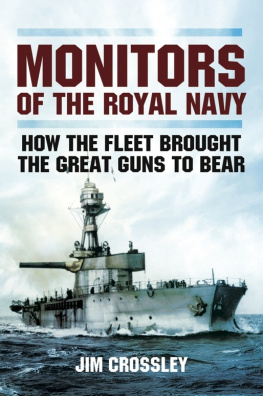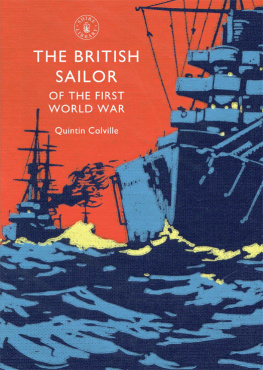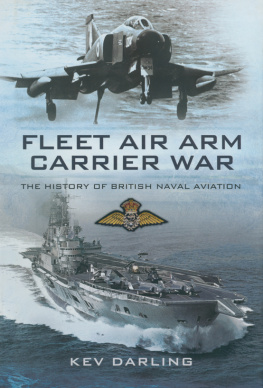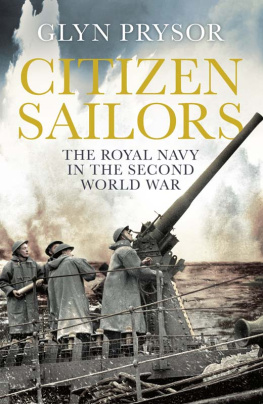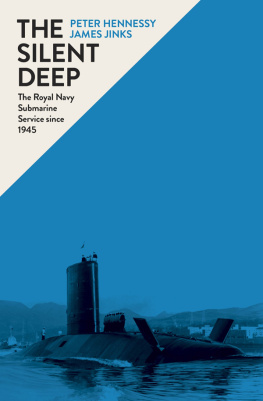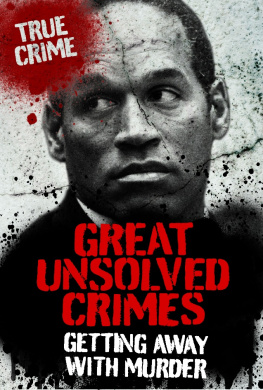

This book is dedicated to Albert Snr, Harriet, Chrissie, Lilly, Elsie,
Albert Jnr, Hilda and Joan.
Fonthill Media Limited
Fonthill Media LLC
www.fonthillmedia.com
First published in the United Kingdom and the United States of America 2014
Copyright Martin Baggoley 2014
ISBN 978 1 78155 118 9
The right of Martin Baggoley to be identified as the author of this work has been asserted by him in accordance with the Copyright, Designs and Patents Act 1988
All rights reserved. No part of this publication may be reproduced, stored in a retrieval system or transmitted in any form or by any means, electronic, mechanical, photocopying, recording or otherwise, without prior permission in writing from Fonthill Media Limited
Typeset in 10.5 pt on 13.5 pt Sabon Lt Std
Contents
1
The Adventurer, 1812
For those prepared to take the risks involved, there were fortunes to be made in whale oil and Captain James Keith was one such man. He invested his life savings of 2,000 in the purchase of a whaling ship named the Adventurer and in September 1811, she sailed out of Portsmouth harbour bound for the South Seas. This proved to be an ill-fated voyage and as nothing was heard of the ship and her crew for many months, she was presumed lost. That was until mid-1812 when Charles Palm, the Swedish second mate, cooper Samuel Telling, a seaman named William Wright and Henry Mendis, a boy deckhand, arrived on foot at Cape Lopez, a Portuguese settlement on the African coast. Palm acted as the groups spokesman and he advised the authorities they were the only surviving members of the Adventurers crew and recounted a story of great hardship and tragedy.
For the first six months of the voyage, all was said to have gone well. However, first of all, the elderly first mate, William Smith, fell ill and died of natural causes and later, Captain Keith was killed in a tragic accident. Keith was said to have harpooned a whale but in doing so, the line became entangled with his legs, dragging him into the ocean and he drowned before he could be rescued. Furthermore, two African hands, who were known as Joe and John and who were signed on by the skipper when supplies were being taken on board, appeared to panic following his death and jumped overboard, despite the vessel being 50 miles from land.
There were now eleven members of the crew remaining, but no one was capable of navigating the ship and it was therefore decided to abandon her. Provisions were loaded into her two small boats, in which the crew, six in one and five in the other, spent three days. Unfortunately, one of the boats was hit by a large wave and a boy was lost overboard. Eventually, the boats reached land and on the first night the survivors slept on the beach. The following day they were attacked by local tribesmen who stripped them naked and were forced to march through the jungle for many weeks as they were destined to be sold as white slaves. The trek was horrific and six of the crew died of disease, fatigue or cruelty at the hands of their captors. However, when they were handed over to a leading slave dealer close to Cape Lopez, he chose to release them, perhaps fearing reprisals from the British in particular if it was ever discovered he had sold a number of their countrymen into slavery.
There were no reasons for the Portuguese to detain the four survivors, who were allowed to return to Europe. Palm and Wright joined the crew of the Dart, a British schooner, which was not due to return home for several months. Telling and Mendis were taken on board a Portuguese ship, which was sailing to Liverpool, where on arrival Telling was in such poor health that he was taken immediately to a nearby hospital for urgent treatment. Mendis wrote to his mother in London to advise her of his safe return and to ask her to send him enough money with which to pay his coach fare home. In the meantime, a kindly old mariner, who took pity on the boy, allowed him to lodge with him and his wife until the money arrived.
Mendis visited Telling daily and after a week was astonished to find Palm and Wright also in the hospital recovering from their ordeal. It emerged that the captain of the Dart had decided to sail to Liverpool rather than prolong the voyage as he had planned originally. In Liverpool, the Adventurers four survivors had given similar accounts to that which Palm told the Portuguese authorities at Cape Lopez and it was agreed by port officials that they would be allowed to leave when they regained their health. Mendis was the first to leave Liverpool after the money arrived from his mother, which enabled him to pay his fare home.
It was now early November and once in the safety of his family home and out of the reach of the others, Mendis had a different tale to tell. He made a statement before Shadwell magistrates in which he confirmed that the account of their capture by local tribesmen and the ordeal that followed until reaching Cape Lopez was correct; however, he now claimed that the truth of what occurred on the Adventurer had not been told. Having listened to this revised version of events, the magistrates ordered three Bow Street runners, Glennen, Wortley and Goff, to travel to Liverpool and arrest Wright, Palm and Telling. By the time they arrived, Wright had left the hospital and was never traced, but Palm and Telling were brought back to London in chains to face justice for the crimes for which Mendis alleged they were responsible.
The youngster was unable to give the date on which the events he now described took place, other than to say they occurred about six months into the voyage. He began by saying that it was night-time and Palm was on watch. Mendis was asleep in his bunk in the same cabin as the captain and first mate when they were suddenly woken by George Rowe, a seaman who was at the helm and who shouted to the skipper, Captain Keith, there is something wrong on deck. Wearing only his nightshirt, the captain rushed up the steps and screamed, Turn out, turn out. The first mate ran out of the cabin and a few moments later Mendis heard him shout, Oh Lord. Mendis followed and realised that all the crew had assembled on deck. He was horrified to see Palm and two other Swedish crewmembers tossing the body of the captain over the ships side. It was then he became aware of the first mate, in a pleading voice, shouting from the sea, Boat, boat! However, there was no attempt to rescue him and he quickly fell silent.
Palm forced each member of the crew to swear an oath on the Bible that he might never see the light of Heaven if he divulged anything of what had taken place that night. Afterwards, the captains belongings were searched and his money and valuables shared out equally among the crew. Mendis admitted to the magistrates that he took the oath and was handed a share of the captains money, but did so only to avoid being killed by the others. As soon as he was at home with his mother and felt safe, he had told the truth. Nevertheless, it is unlikely that he intended to implicate Telling as he was on friendly terms with him. Indeed, when questioned by the magistrates following his arrest, Telling not only corroborated much of what the youngster had said, but was able to provide more detailed information about what he witnessed on the Adventurer on the night in question. He claimed to have watched the captain step out of his cabin and heard him shout to Palm, Charles, what are you about? However, the Swede did not reply but hit the captain several blows to the head with a coopers hammer. As he fell, the captain cried out, Oh Charles, you have done for me. It was at this moment that the first mate came on deck, whereupon another Swedish crewmember, who was obviously in cahoots with Palm, struck him a number of times with a cooks axe, forcing him to stagger and fall. Telling then watched as Palm and the other Swede threw the two men into the sea. Although the captain was dead, Telling had heard the mate begging for mercy from the water but as Mendis had already explained, his pleas were ignored.
Next page


